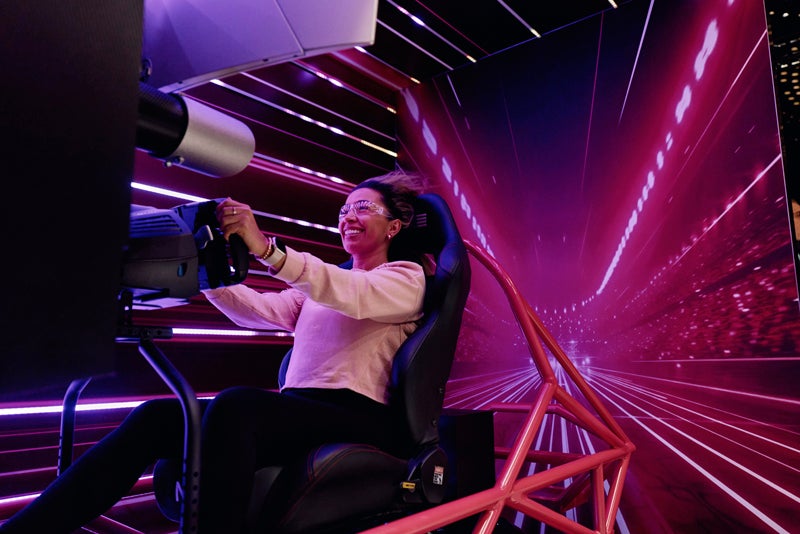 Legend has it that in 1962, when President John F. Kennedy was visiting NASA, he introduced himself to a janitor working at the space center and asked him what he was doing. The janitor responded: “Well, Mr. President, I’m helping put a man on the moon.”
Legend has it that in 1962, when President John F. Kennedy was visiting NASA, he introduced himself to a janitor working at the space center and asked him what he was doing. The janitor responded: “Well, Mr. President, I’m helping put a man on the moon.”
This employee’s role might have been of a more grounded nature but he took a more stratospheric view of what he was achieving as part of the organization. Quite simply put: NASA had a real understanding of how to effectively engage this employee, resulting in commitment and enthusiasm, which leads to a more successful business.
Fast forward 50 years and we see global coffee giant Starbucks announce a move to pay for its US employees’ online bachelor degree programs. This may be viewed cynically but as Benjamin Franklin once said: “An investment in knowledge pays the best interest.”
Starbucks’ decision to invest in its employees through education will certainly pay back with interest. Engaging employees in this way is not only an investment in its workforce but also an investment in its customers: engaged employees lead to satisfied customers.
An engaged employee who is passionate about the work they do and the company they work for, will go above and beyond what is expected of them for the greater benefit of the company. Those employees are the ones who will directly affect each and every customer experience across the entire journey, positively, meeting the needs and desires of each customer and creating value for the business. The result is effective customer engagement.
Businesses like Starbucks that embrace the connection between employee engagement and customer engagement as a crucial strategic priority can expect greater satisfaction, loyalty and advocacy from both. The connection is clear but many businesses today are not leveraging it to their best advantage.
In today’s digital world, customers are more empowered and businesses are refocusing on customer engagement as a strategic priority to create and sustain solid, long-term customer relationships. But despite investment in technology for managing customer relationships, customer satisfaction, loyalty and advocacy continue to be elusive goals for many businesses.
A report from Thunderhead.com redefines customer engagement in the age of digital transformation. “Engagement 3.0: A New Model for Customer Engagement” provides insight into building true customer engagement, investigating not only how CMOs feel about tackling the engagement challenge, but also how customers feel about their interactions with the companies they do business with, including the key factors that drive their experiences and feelings and shape their long-term relationships with businesses.
Social and mobile technologies have changed the way customers interact with brands. Customers spend a great deal of time directly interacting with a brand’s employees, which is why employee attitude and culture is so important.
The research finds that customers want a seamless experience and personalized interactions that deliver value across all touchpoints. They want communications that are relevant to them at every point of interaction throughout their journey, whether digital (mobile, web, social) or offline (call center and print). Starbucks knows that by investing in their employees—providing benefits that can really make a difference in their lives and the tools to be successful, employees will feel empowered and the company will benefit from a loyal and dedicated workforce, keeping the customer happy.
In today’s digital world, businesses must communicate with customers in a relevant and personal way, keep pace with customer expectations and make sure all communications are connected throughout a customer’s journey with the business. Eighty-two percent of customers feel being treated with a one-size-fits-all approach results in a negative perception of that business. Sixteen-percent regard such a mishap as grounds for considering a change in providers and 12% would definitely change as a result.
Employees that feel valued by their employers, whether through education benefits or technology solutions that help them do their jobs; will take the time and effort to treat customers with the care and attention they expect. Giving customers a positive perception of a business and reduce the chances of them leaving for a competitor.
Disjointed communications caused by company silos also present a major challenge for businesses, and are something where engaged employees can really make a difference. Eight-five percent of customers reported negative feelings toward businesses that require them to provide information multiple times and 27%said it would prompt them to consider taking their business to a competitor. One-third (30%) said they would share a bad experience online, on the phone or in-person with an average of 25 people – which in today’s digital world can be very costly for a business. Based on that research, if one percent of a major bank’s seven million customers has a bad experience (which is 70,000 people), those bad experiences will be shared approximately 357,000 times—resulting in irreparable damage to the bank’s reputation.
Employees are a large part of great customer journeys and experiences across all channels and with new business models becoming increasingly collaborative in nature, based on real-time context, personalized communications and interactions with customers, has evolved into a more complex and multi-dimensional concept. To provide true customer engagement employees must be empowered with the tools and technology in the workplace to avoid frustration. This enables the provision of improved, value-driven customer experiences that build effective customer engagement and creates greater job satisfaction.
Effective customer engagement can only be achieved by treating every customer as if they are the most important customer you’ll ever have – and that starts with treating your employees as if they are the most important employee you’ll ever have – through great benefits but also by providing them with the tools they need to be successful. Starbucks is taking its employees to the moon. Will you do the same?
George Wright is the senior vice president & general manager, Americas & APAC, Thunderhead.com.



